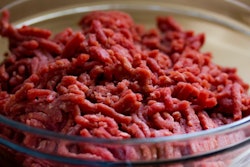
The global food supply chain is breaking. Tyson Foods chairman John Tyson’s full-page ad in The New York Times is only the latest evidence. U.S. farmers are pouring millions of gallons of milk down the drain each day, euthanizing pigs, chickens and cows by the thousands, and plowing under healthy crops. Major cereal exporters like Russia, Ukraine, Kazakhstan and Vietnam have implemented export controls. Logistical bottlenecks in places like Canada, Argentina, and Brazil are causing global delays. And, a worsening desert locust plague in East Africa is threatening the already tenuous food security of countries like Kenya, Ethiopia and Iran.
In the midst of all this, it is worth remembering that human civilization has produced enough food to feed the world over since at least 2005. According to the Food and Agriculture Organization of the United Nations, the world average per capita availability of food for human consumption that year—even after allowing for waste, animal consumption, and non-food uses—was 2,770 calories per person. The primary issue right now in the food supply chain is not supply, but the antiquated chain itself, which will require collaboration among producers, consumers and government entities to overcome.
2005 was a long time ago. The iPhone had not yet been invented. After acceding to the World Trade Organization four years prior, China had officially become the world’s factory.
How is it possible that so much has changed in the world, yet so little has changed in food supply chains? Last April, the U.S. Food and Drug Administration warned that food supply chains needed to improve their traceability because many in the food system “utilize a largely paper-based system.” Yes, paper.
The Coronavirus disease (COVID-19) has exhibited the evidence of the food supply chain’s fragmentation and chronic neglect for everyone to see. Technological backwardness, waste and inefficient resource allocation have long plagued the global supply chain. The grim stories about rotting food, murdered animals, bankrupted farmers and starving people could all have been avoided had the system been hospitable to innovation and supportive of basic maintenance. They also foreshadow what the future might look like if COVID-19’s lessons are not learned and applied immediately.
COVID-19 is unpredictable, consequential and retroactively explicable, but future pandemics—and there will be future pandemics—will not qualify. They are predictable.
Future food supply chain disruptions that result from climate change and increased geopolitical competition should also not be considered black swans. These too are predictable. Besides climate change increasing agricultural yields in some parts of the world—and decreasing them in others—urbanization, population growth and water scarcity will cause and exacerbate future political conflicts over food as well.
The food supply chain was not designed for present or future realities. After all, globalization was supposed to be the force that ended world hunger by 2030. By encouraging free trade and economic growth, food producers were convinced that unfettered access to new markets abroad like China and India would boost their bottom lines for years and decades to come. This notion mistakes the concept of a “lean” supply chain for a brittle one. Food is the most precious of all national resources, and no country is happy when dependent on another country for its food security.
COVID-19 will change all of that. Any industry that has become dependent on intermediate suppliers, exports and large institutional clients is being disrupted. Supply is ample. Demand is robust. What has changed is the nature of the demand and the logistics of delivery, and in this, food supply chains have been weighed, measured and found wanting. To meet the challenges of food supply chains in the future, producers, consumers and governments must work together to:
1. Minimize waste. Farmers, suppliers and consumers alike must work together to eliminate food waste. Americans alone waste 40% of the food produced in their country each year, accounting for a quarter of its annual freshwater consumption and 300 million barrels of oil. Even a slight reduction of food waste would have material economic benefit for both farmers and consumers.
2. Embrace innovation. From drones that can tell farmers the optimal time to plant a crop to consumers being able to buy directly and even place future orders from farms of their choice, it is long past time for the food supply chain to join the 21st century.
3. Get in shape. A lean supply chain is not “lean” just because it depends on the smallest possible number of inputs or transfer points. Lean supply chains are strong and flexible, capable of shifting due to global events, natural disasters and demand preferences. Food producers need to be aware of potential global risks to their business and to prepare contingency plans for when those risks emerge.
4. Diversify consumer bases. As in any industry, it is irresponsible to depend too heavily on a single customer. A healthy mix of direct sales, retail sales, institutional sales and exports is a better bet than putting all eggs in a single basket or relying on a single sales channel.
5. Invest in infrastructure. Energy prices are at historically unprecedented lows. Millions unemployed. Trillions of dollars of economic stimulus can be had. There has never been a better time for governments to invest in physical infrastructure crucial to minimizing future disruptions and maximizing the profits of their food industries.
COVID-19 is a wake-up call that the status quo is unsustainable, and that innovation is crucial to making sure food supply chains are not crippled in the future by more serious and perfectly predictable disruptions.
















